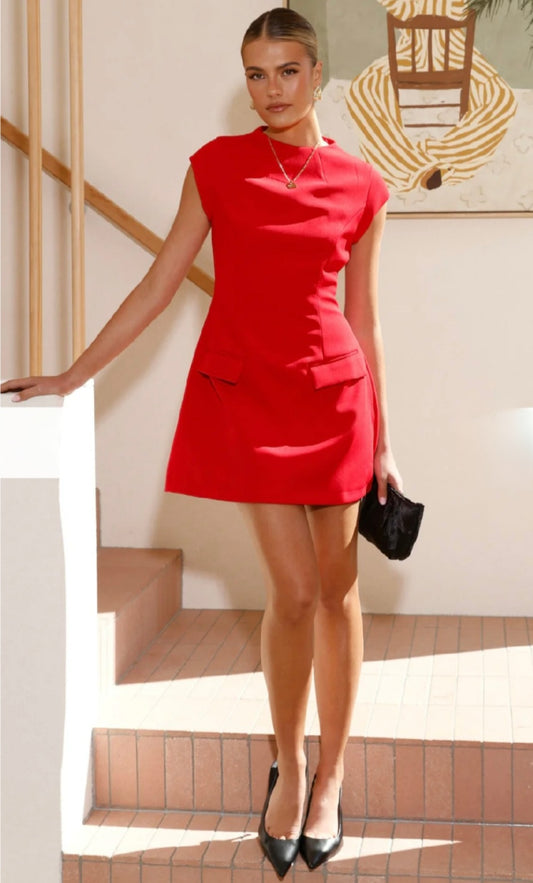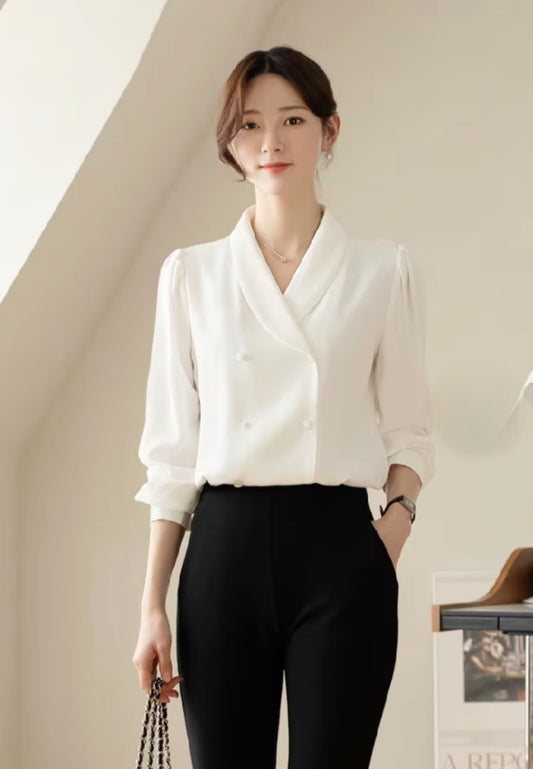
"Mastering the Art of Hand Embroidery with Sequins: A Look at November 28's Exceptional Craftsmanship"
Share
Embroidery is an ancient art form that has been passed down through generations. Hand embroidery, in particular, is a beautiful and intricate craft that involves using a needle and thread to create stunning designs on fabric. The process of hand embroidery requires patience, skill, and creativity, and it can be a highly rewarding hobby.
History of Hand Embroidery
Embroidery has been around for thousands of years, with examples of hand embroidery dating back to ancient Egypt and China. In Europe, hand embroidery became popular in the Middle Ages, and it was often used to embellish clothing and religious garments.
During the Renaissance, hand embroidery became even more elaborate and intricate, with highly skilled artisans creating stunning designs using silk, gold thread, and precious stones.
Today, hand embroidery is still a popular craft, and many people enjoy creating their own designs and patterns.
Materials Needed for Hand Embroidery
To get started with hand embroidery, you will need a few basic materials, including:
Embroidery hoop: This is a circular frame that holds the fabric taut while you stitch.
Fabric: You can use any type of fabric for hand embroidery, but Satin, crepe, cotton, linen are popular choices.
Embroidery floss: This is the thread that you will use to stitch your design. Embroidery floss comes in many different colors, and you can mix and match to create your own unique palette.
Embroidery needles: These needles have a larger eye and a sharp point, making them ideal for embroidery.
Scissors: You will need a pair of small, sharp scissors to cut your thread.
How to Embroider by Hand
There are many different stitches that you can use when embroidering by hand, but here are a few basic stitches to get you started:
Backstitch: This is a basic stitch that is used to create straight lines. To do a backstitch, bring your needle up through the fabric, then go back down through the fabric a short distance away. Bring your needle up again, this time inserting it into the previous stitch. Continue in this way, making a line of stitches.
Satin stitch: This is a filling stitch that is used to cover a large area with thread. To do a satin stitch, bring your needle up through the fabric, then insert it back down a short distance away. Bring the needle up again next to the first stitch, then insert it back down next to the second stitch. Continue in this way, filling in the area with stitches.
French knot: This is a decorative stitch that creates a small knot on the fabric. To do a French knot, bring your needle up through the fabric, then wrap the thread around the needle twice. Insert the needle back down through the fabric near where you started, holding onto the thread with your other hand to keep the knot in place. Pull the needle through the fabric, and the knot will stay on the surface.
Once you have mastered these basic stitches, you can experiment with more complex designs and patterns.
Tips for Successful Hand Embroidery
Start with a simple design: If you are new to hand embroidery, start with a simple design and work your way up to more complex patterns.
Use good quality materials: High-quality embroidery floss and fabric will make your embroidery look better and last longer.
Keep your stitches even: Try to keep your stitches evenly spaced and the same length for a neat, professional finish.
Practice, practice, practice: The more you practice, the better you will become at hand embroidery.
Conclusion
Hand embroidery is a beautiful and rewarding craft that allows you to create your own unique designs and patterns. With a few basic materials and some practice, you can create stunning works of art that will be treasured for years to come.
"The art of sequins embroidery"
Hand embroidery with sequins is a beautiful way to add extra sparkle and dimension to your embroidery projects. Sequins can be used to highlight specific parts of a design, or they can be used to create a completely new design element. Here are some tips for incorporating sequins into your hand embroidery projects:
Materials Needed for Hand Embroidery with Sequins
In addition to the basic materials needed for hand embroidery, you will also need:
Sequins: There are many different types of sequins available, including flat, cup, and shaped sequins. Choose the type of sequin that best suits your design.
Beads: You can also use beads to add extra dimension to your embroidery.
Thread: Use a strong thread, such as nylon or silk, to attach the sequins and beads.
How to Embroider with Sequins by Hand
To attach sequins and beads to your embroidery, you will use a technique called "beading" or "sequining."
Here's how to do it:
Thread your needle with a strong thread, and knot the end.
Bring the needle up through the fabric where you want to attach the sequin or bead.
Slide the sequin or bead onto the needle, and push it down to the fabric.
Bring the needle back down through the fabric near where you started, making sure to catch the sequin or bead with the thread.
Repeat this process to attach more sequins and beads as needed.
Tips for Successful Hand Embroidery with Sequins
Choose the right sequins: Flat sequins are easier to sew onto fabric, while cup sequins create a more three-dimensional effect. Shaped sequins can add an extra level of interest to your design.
Use the right size sequins: Sequins come in many different sizes. Choose a size that complements your design without overwhelming it.
Don't overdo it: Use sequins and beads sparingly to create a subtle, yet eye-catching effect. Too many sequins can make your design look tacky.
Experiment with different stitches: You can use different stitches, such as the couching stitch or the satin stitch, to attach sequins and beads to your embroidery.
Conclusion
Hand embroidery with sequins is a beautiful way to add extra sparkle and dimension to your embroidery projects. With a few basic materials and some practice, you can create stunning works of art that will be treasured for years to come. Whether you are a beginner or an experienced embroiderer, adding sequins to your embroidery is a fun and creative way to take your skills to the next level.
Mastering the Art of Hand Embroidery with Sequins by November 28
November 28 is a brand that has mastered the art of hand embroidery with sequins. Founded by designer Shubhum Jain and Dhara Jain, November 28 creates beautiful, high-quality clothing and accessories that incorporate intricate hand embroidery techniques, including sequining.
One of the reasons why November 28 has been so successful in mastering the art of hand embroidery with sequins is their commitment to traditional embroidery techniques. Rather than using machines to mass-produce their products, the brand employs skilled artisans who use traditional hand embroidery techniques to create each piece. This ensures that each product is unique and of the highest quality.
Another factor that sets November 28 apart is their attention to detail. Each sequin and bead is carefully placed by hand, resulting in a stunning, intricate design that catches the eye and adds an extra level of dimension to each piece. The brand also uses high-quality materials, such as satin, crepe, georgette, cotton and linen, to create their products, which ensures that they will stand the test of time.
In addition to their commitment to traditional embroidery techniques and attention to detail, November 28 is also known for their creativity and innovation. They use sequins and beads in unique ways to create one-of-a-kind designs that are both stylish and timeless. Whether it's a sequined jacket, a beaded top, or a hand-embroidered plazo, each November 28 product is a work of art that is sure to turn heads.
November 28's products are widely regarded as the best in the business when it comes to hand embroidery with sequins. Here are some reasons why:
Attention to detail: Each sequin and bead is carefully placed by hand, resulting in a stunning, intricate design that catches the eye and adds an extra level of dimension to each piece. The skilled artisans employed by November 28 are experts in traditional embroidery techniques, which ensures that each product is of the highest quality.
High-quality materials: November 28 uses only the finest materials, such as satin, crepe, georgette, to create their products. This ensures that each product is not only beautiful, but also durable and long-lasting.
Unique designs: November 28 is known for their creativity and innovation when it comes to using sequins and beads. Their designs are unique and eye-catching, making them stand out in a crowded market.
Customization: November 28 also offers customization services, allowing customers to create one-of-a-kind pieces that are tailored to their individual style and preferences.
Ethical production: November 28 is committed to ethical production practices, which means that their products are made in a way that is sustainable, environmentally friendly, and socially responsible.
Overall, November 28's products are the best in business when it comes to hand embroidery with sequins. Their attention to detail, high-quality materials, unique designs, customization services, and commitment to ethical production practices all contribute to the brand's success and popularity. If you're looking for beautiful, high-quality products that incorporate hand embroidery with sequins, November 28 is the brand to choose.








